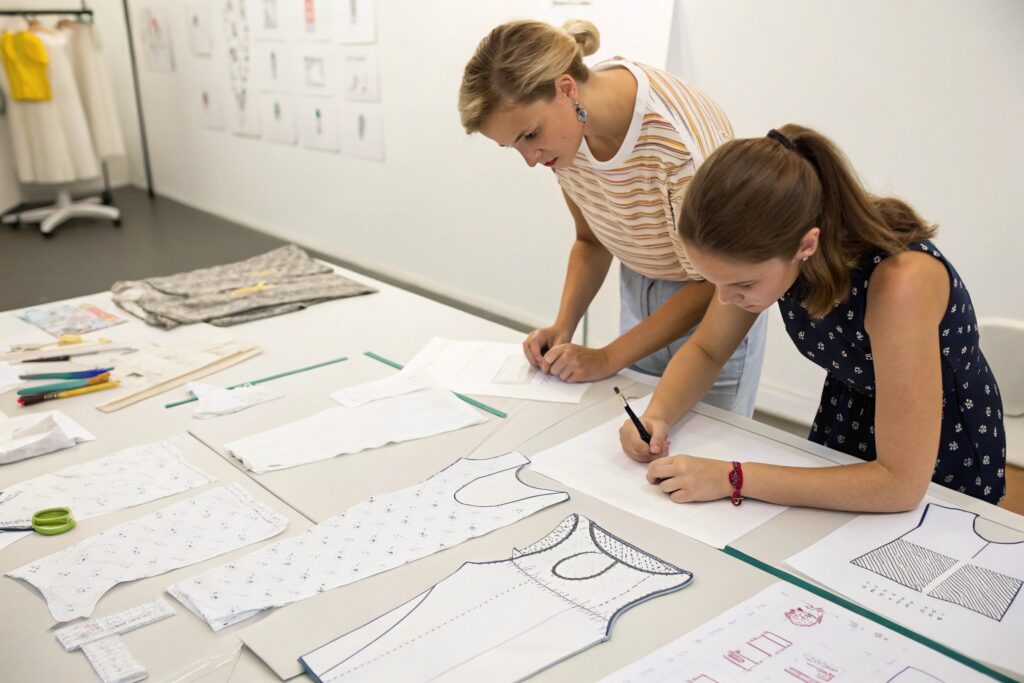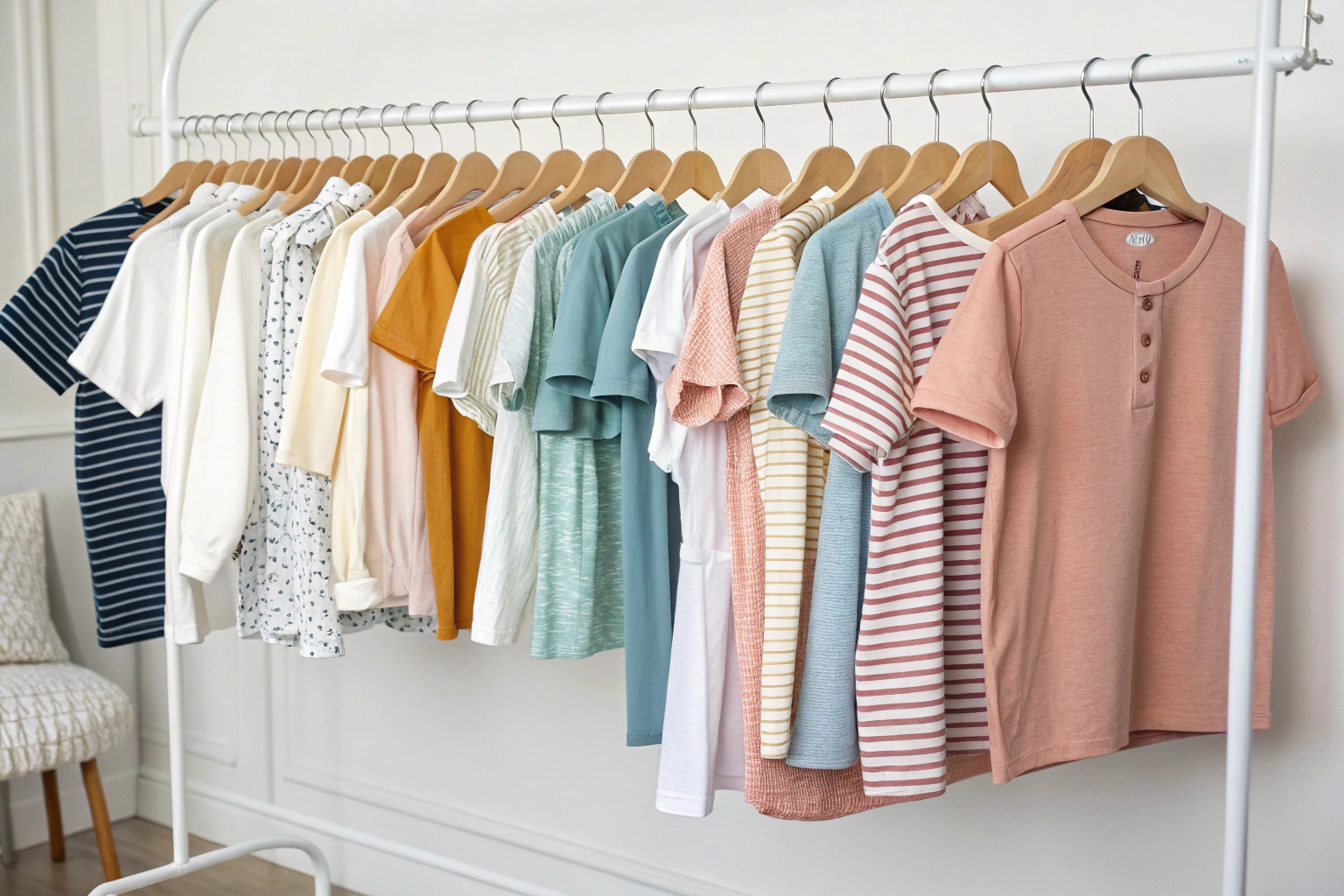Production inefficiency costs brands money, time, and trust. Capsule thinking is the antidote—streamlined, intentional, and built for speed.
Capsule strategies improve production efficiency by limiting SKUs, focusing on core materials, and simplifying processes—leading to faster output, lower waste, and better margins.
If you're scaling a kidswear brand or testing new collections, capsule thinking can help you do more with less—without sacrificing style or growth.
How Capsule Strategies Reduce Overproduction Waste
Overproduction happens when brands guess, overbuild, and pray inventory moves. Capsules make it smarter.
Capsule collections reduce overproduction by forcing tighter forecasting, minimizing SKU count, and shortening design-to-shelf timelines.

Why is overproduction a top risk for growing fashion brands?
Because unsold inventory drains cash and racks up storage costs. You overbuy fabrics, print more than you can sell, and then discount just to recover.
At Fumao Clothing, we work with brands that used to overproduce full ranges. After shifting to capsules—3–5 SKUs per drop—they sold faster, clearer, and cleaner.
One client reduced end-of-season leftovers by 60% in just two quarters. All because they committed to the capsule mindset: less, but better.
How does a capsule mindset shift the way brands approach volume planning?
Capsules make you plan by demand, not hope. You launch a small drop, test interest, and restock what works. This cuts the risk of manufacturing large batches of items no one wants.
With our factory, we support 300–500 piece total runs—not per style. This lets brands order tight, sell through quickly, and use cash to fund the next drop.
It's agile. It's lean. And it keeps your inventory healthy.
The Link Between Capsule Planning and Faster Turnarounds
Time kills launches. The more complicated your plan, the slower it moves. Capsules are designed to move fast.
Capsule collections speed up production by reducing complexity, enabling parallel development, and allowing focused factory scheduling.

How does capsule planning allow faster design-to-delivery timelines?
When you limit styles, fabrics, and colors, you eliminate decision bottlenecks. Design approvals are faster. Sampling is faster. Production runs are simpler.
At Fumao Clothing, capsule clients complete the entire cycle—design, sample, produce, and deliver—in as little as 6–8 weeks. Traditional collections take 12–16 weeks.
Less back-and-forth means fewer delays. Fewer variables mean tighter control.
Capsules also let us pre-schedule production slots because timelines are clear from day one.
What operational changes help factories deliver faster for capsule clients?
Here’s how we keep our capsule timelines short:
- We run capsule sampling on a dedicated table—not shared with bulk clients.
- We pre-source common capsule fabrics to skip long lead times.
- We develop multiple SKUs in parallel, not sequentially.
- We offer DDP shipping to simplify customs and speed up delivery.
If you need a winter capsule by November, we can lock your calendar by August. No drama, just delivery.
Why Fewer SKUs Lead to Streamlined Manufacturing
More styles = more problems. Every added SKU creates more steps, more checks, more risk. Capsules avoid that.
Capsule collections improve manufacturing efficiency by reducing pattern development, simplifying quality control, and consolidating raw material sourcing.

How does SKU minimization simplify factory workflow?
Let’s say you run 5 styles instead of 20. That means:
- 75% fewer paper patterns to make and revise
- Fewer sewing machine setups
- Shorter time in pre-production planning
- Less chance of error during cutting, stitching, or labeling
Your whole line flows faster. At Fumao Clothing, we often recommend building capsules around 2–3 base patterns. A tee becomes a dress. A romper becomes a PJ set. This reduces the factory load—and your cost.
Why does a tighter SKU list result in better quality control?
When we work on fewer styles, we inspect better. The production team becomes familiar with each piece. They know where seams must align. They know how the fabric behaves. It builds rhythm.
Also, smaller runs mean shorter feedback loops. If there’s a stitching issue, it gets flagged in the first 50 units—not after 2,000 are boxed.
Capsules reduce chaos. And in production, less chaos = better clothes.
Cost-Saving Benefits of Capsule Production Models
Capsules aren't just creative—they’re strategic. Done right, they save money at every stage.
Capsule production reduces costs by consolidating materials, reducing labor time, minimizing waste, and avoiding overdevelopment of unsellable styles.

What specific cost savings come from capsule thinking?
Here’s what our clients typically save:
| Area | Savings |
|---|---|
| Sampling | Fewer patterns and iterations |
| Materials | Bulk buy shared fabric/colors |
| Labels | One set covers entire drop |
| Labor | Less setup time, fewer changeovers |
| Storage | Less inventory, faster sell-through |
We helped one brand go from 18 SKUs to 6. They saved 28% in development costs and improved sell-through by 42%. The shift let them launch more often—with fewer headaches.
How do capsules help small brands avoid financial overcommitment?
Because you don’t need to spend $30,000+ to launch a line. With capsules, you can start strong with $5–8K, test the market, and reinvest based on actual sales.
At Fumao Clothing, we support brands starting with 300-piece capsules. We help them grow from there—without ever overextending. No risky inventory. No locked-up cash.
Capsules are a safer way to build profit—and stay flexible.
Conclusion
Capsule thinking is the smart path to production efficiency—less waste, faster turnarounds, lower costs, and stronger margins. It’s not just a trend. It’s a manufacturing strategy for long-term success.










